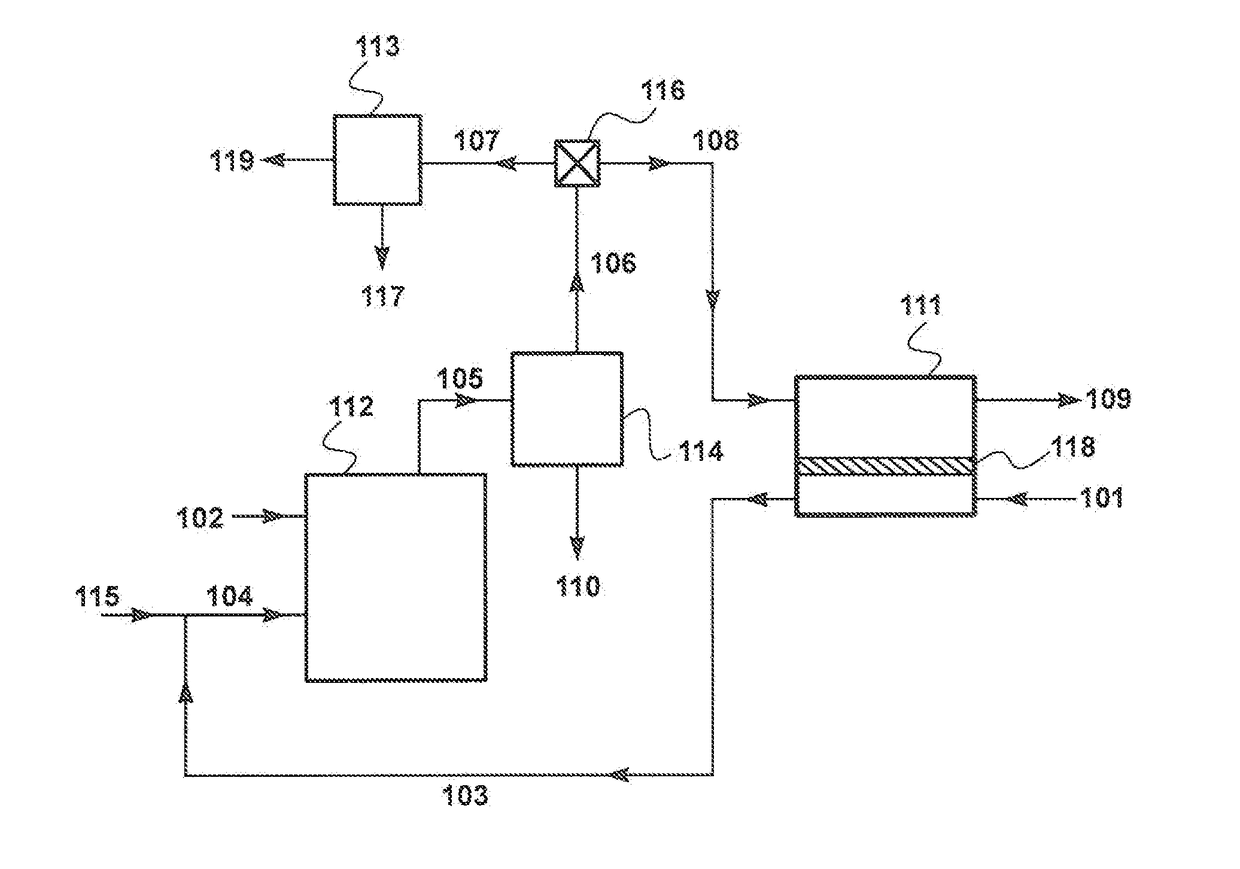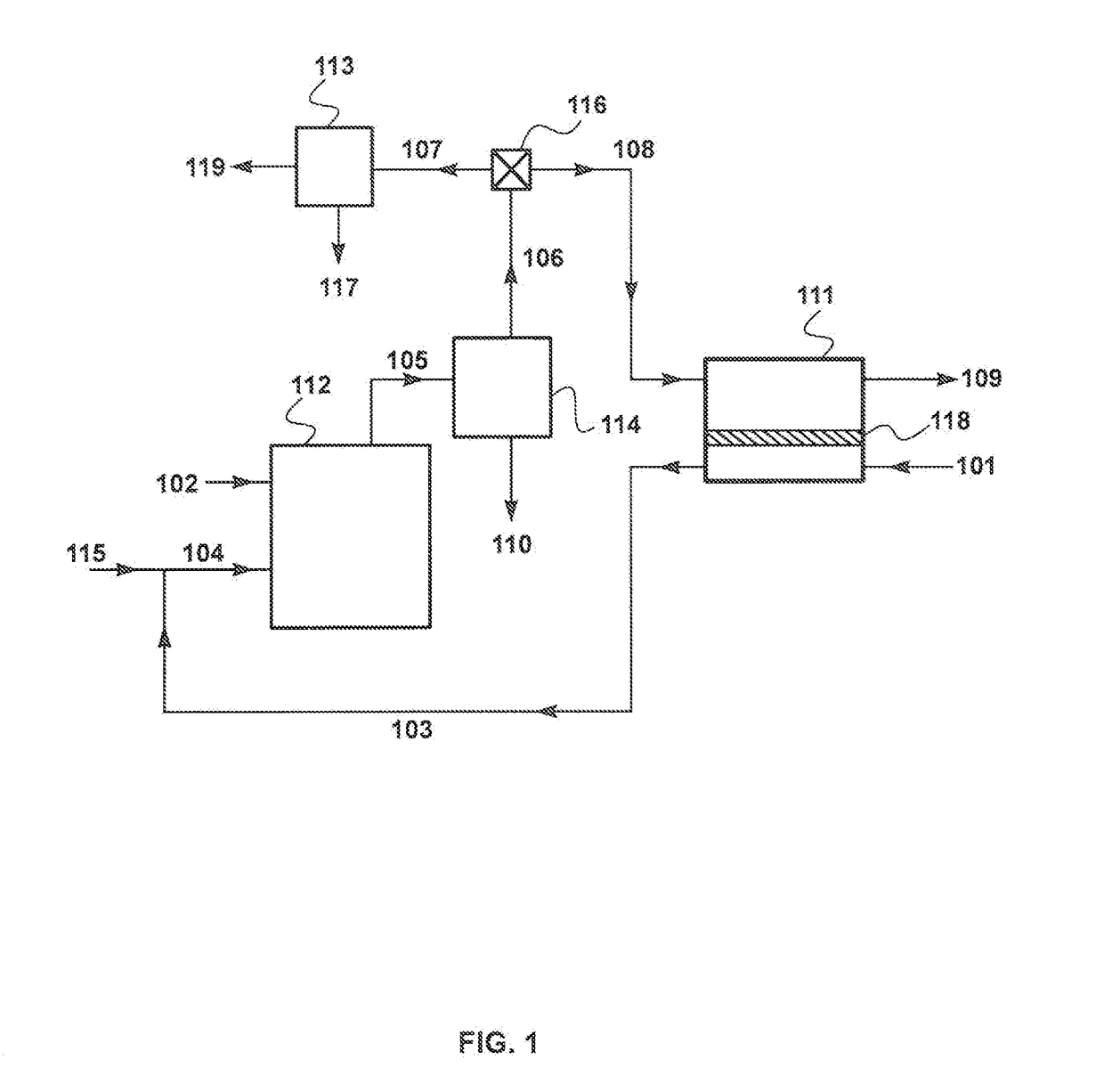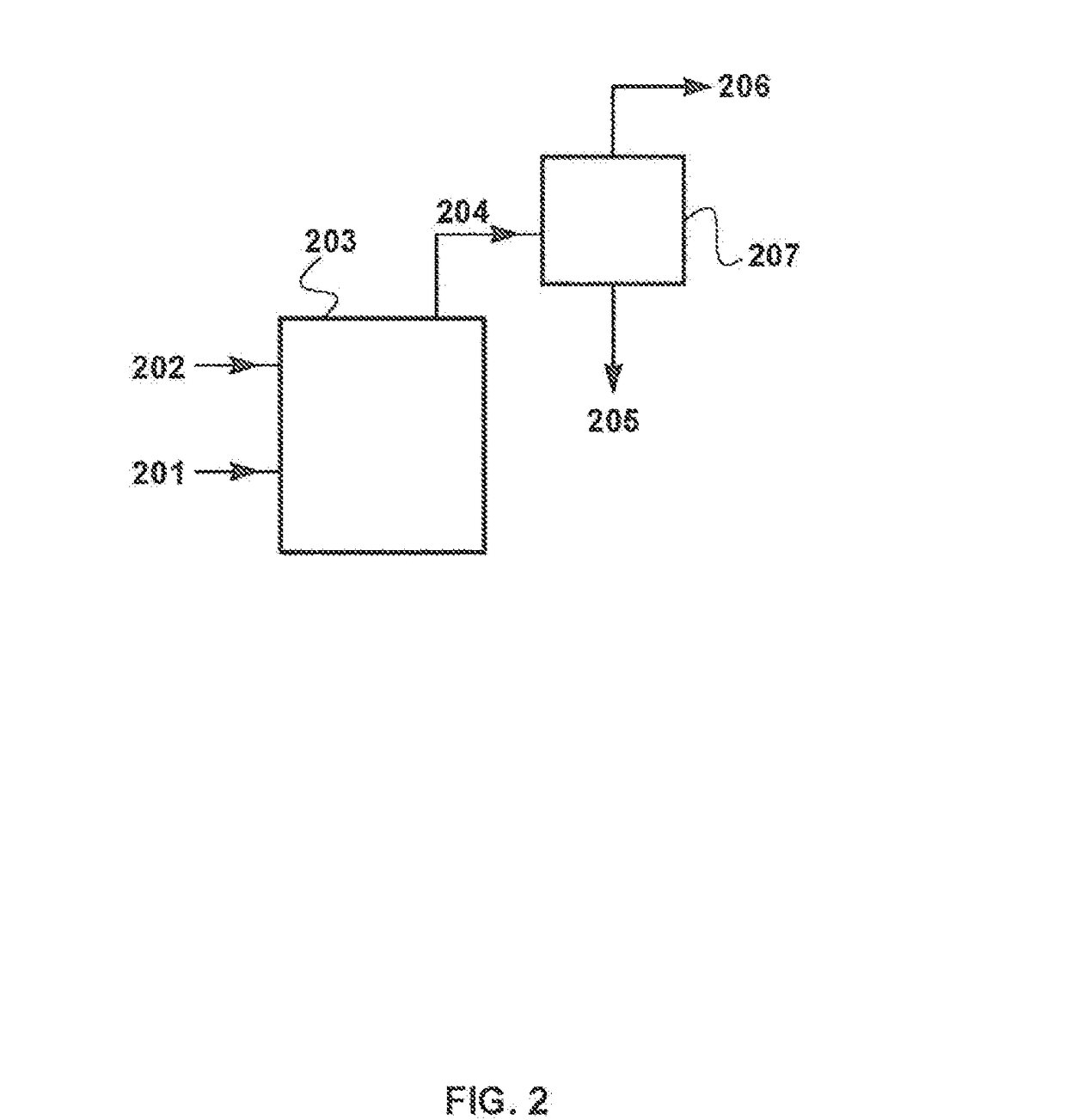Gas Separation Process Using Membranes with Permeate Sweep to Remove CO2 from Combustion Exhaust
a gas separation and combustion exhaust technology, applied in separation processes, emission prevention, lighting and heating apparatus, etc., can solve the problems of power plants producing enormous amounts of flue gas, and achieve the effect of less cost and simpler transport of carbon dioxide enriched exhaust gas
- Summary
- Abstract
- Description
- Claims
- Application Information
AI Technical Summary
Benefits of technology
Problems solved by technology
Method used
Image
Examples
example 1
Calculations for Other Examples
[0111](a) Membrane Permeation Experiments:
[0112]The following calculations were performed using a composite membrane having a polyether-based selective layer with the properties shown in Table 1.
TABLE 1GasPermeance (gpu)*CO2 / Gas SelectivityCarbon dioxide1,000 —Nitrogen3033Oxygen6017Hydrogen100 10Water5,000** —*Gas permeation unit; 1 gpu = 1 × 10−6 cm3(STP) / cm2 · s · cmHg**Estimated, not measured
[0113](b) Calculation Methodology:
[0114]All calculations were performed using a modeling program, ChemCad 5.6 (ChemStations, Inc., Houston, Tex.), containing code for the membrane operation developed by MTR's engineering group. For the calculations, all compressors and vacuum pumps were assumed to be between 75-85% efficient. In each case, the modeling calculation was performed to achieve 90% recovery of carbon dioxide from the flue gas stream, except for Examples 8 and 9.
[0115](c) “No Membrane” Example:
[0116]A computer calculation was performed to determine th...
example 2
n Process with Partial Flue Gas Recycle and No Membrane Step (not in Accordance with the Invention)
[0120]A computer calculation was performed to determine the chemical composition of untreated exhaust gas from a natural gas combustion process. The process differed from the base-case calculation of Example 1 in that the intake of air was reduced to about half that of Example 1, and the remainder of the gas required for temperature and flow control in the combustor was assumed to be provided by recirculating a portion of the combustion exhaust gas to the combustor inlet, as is commonly done. FIG. 3 is a schematic drawing of a flow scheme for such a combustion process.
[0121]Referring to FIG. 3, natural gas stream 302 and air stream 304 are introduced into combustion step or zone 312. Stream 304 is made up of recycled exhaust stream 307 and additional air or oxygen supply stream 301.
[0122]Combustion exhaust stream 305 is withdrawn, then routed through a condenser 314, where water 310 is...
example 3
f the Invention
[0125]The calculations for this Example were performed using the flow scheme shown in FIG. 1 and described in the Detailed Description, above. This flow scheme includes a sweep-based membrane separation step 111, which was assumed to be carried out using membranes having the permeation properties listed in Table 1. In this calculation, stream 105 leaving the combustor was at a pressure of 3 bar, which facilitated the operation of the membrane sweep and the carbon dioxide capture step.
[0126]To facilitate operation of the calculation software, for Examples 3 through 7, the base case air flow provided to the combustor via the membrane permeate side was assumed to be about 975 m3 / h (1,250 kg / h), compared with the typical air flow to a 500 MW power plant of about 1.8 million m3 / h used for the calculations of Examples 1 and 2. In other words, the scale of the calculation for the following Examples was about 1 / 1,200 of the scale for a typical natural gas-fired power plant. T...
PUM
| Property | Measurement | Unit |
|---|---|---|
| vol % | aaaaa | aaaaa |
| vol % | aaaaa | aaaaa |
| vol % | aaaaa | aaaaa |
Abstract
Description
Claims
Application Information
 Login to View More
Login to View More - R&D
- Intellectual Property
- Life Sciences
- Materials
- Tech Scout
- Unparalleled Data Quality
- Higher Quality Content
- 60% Fewer Hallucinations
Browse by: Latest US Patents, China's latest patents, Technical Efficacy Thesaurus, Application Domain, Technology Topic, Popular Technical Reports.
© 2025 PatSnap. All rights reserved.Legal|Privacy policy|Modern Slavery Act Transparency Statement|Sitemap|About US| Contact US: help@patsnap.com



